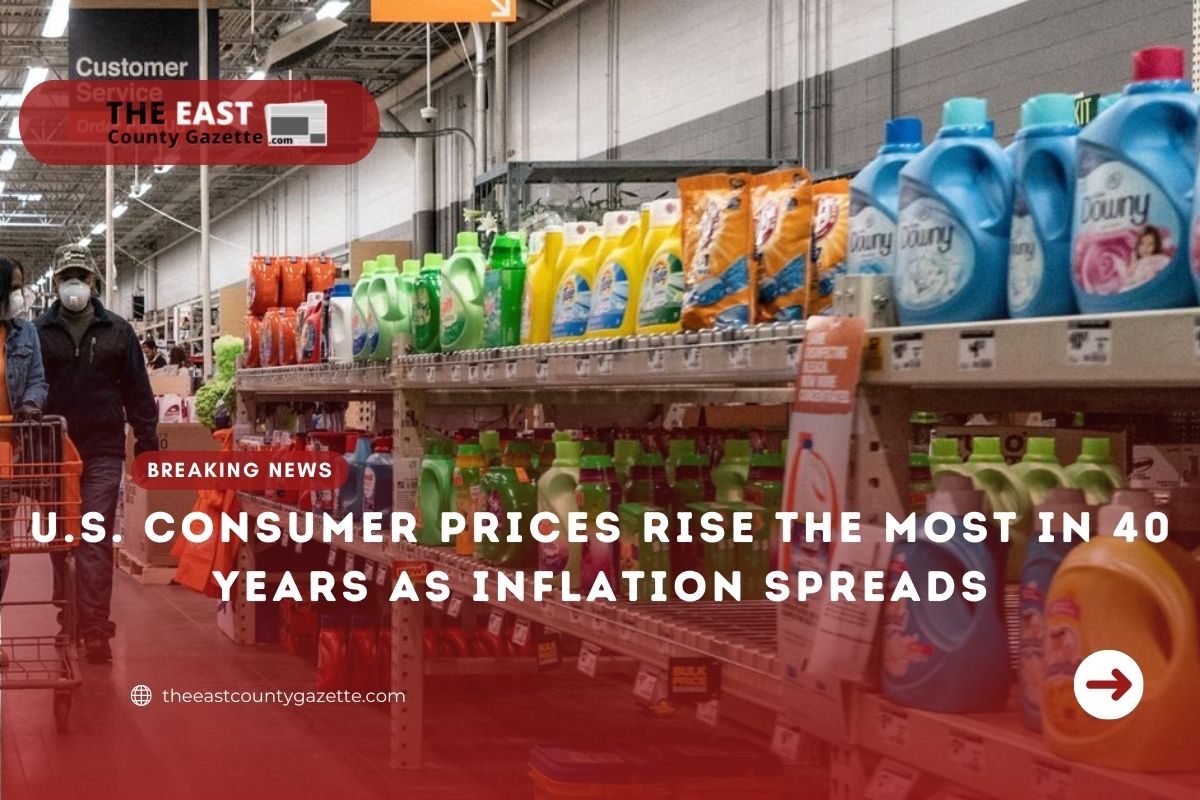In January, consumer prices rose substantially, fueling speculation that the Federal Reserve will raise interest rates by 50 basis points next month.
Labor Department figures released on Thursday showed that rents, electricity and food prices increased significantly, placing additional political pressure on President Biden amid anxiety over the rising cost of living.
Biden’s economic agenda could be threatened by high inflation, which has exceeded the Fed’s 2% target, Reuters reported.
According to Biden, while there are hardships facing American families, “there are also signs that we will make it through this challenge.”
In his statement, he referred to the unchanged price reading for motor vehicles, a major inflation driver.
“For the Fed, this report provides another wake-up call. Inflation is here and it continues to make its presence known everywhere,” Bank of America Securities economist Alexander Lin said.
“We believe that today’s print endorses the Fed to move more quickly, and the market will likely encourage the Fed to hike 50 basis points at the next meeting.”
Consumer prices increased 0.6% last month after increasing 0.5% in December. There was a 0.9% rise in food prices, and 1.0% rise in prices of food consumed at home.
Cereals, bakery products, dairy products, fruits and vegetables all experienced significant price increases. Prices for meat were slightly higher.
Prices of electricity rose by 4.2%, causing an offset by cheaper gasoline and natural gas.
The CPI increased 7.5% from February to January, the largest increase year-over-year since February 1982.
The increase in January followed a 7.0% advance in December, marking the fourth straight month of growth in excess of 6%.
According to Reuters, economists expected the CPI to rise 0.5% on month and 7.3% on a year-over-year basis.
The consumer price index was re-weighted based on consumer expenditure data for 2019-2020 with the January report. By increasing the goods weight and trimming services, the CPI rose above expectations to a certain extent.
During the COVID-19 pandemic, spending shifted from services to goods, resulting in high inflation.
Spending soared as a result of the pandemic relief, but capacity limitations restricted production and delivery of goods to consumers as workers were sidelined by the pandemic.
According to CME’s FedWatch tool, the financial markets are pricing in a 50 basis point increase in March.
A basket of currencies showed little change against the dollar on Wall Street.
U.S. Treasuries fell in price, and the yield on the 10-year note reached 2% for the first time since August 2019.
Recent wage inflation measures have risen strongly in recent months, which contributes to market predictions.
Nevertheless, not all economists expect the Fed to move so aggressively on its first rate hike since it would stifle the economy.
There is an expectation that the central bank will raise rates by 25 basis points at least seven times this year.
“In this environment, an over-reactive Fed that starts tightening too much and too fast might mean that we end the year with much slower growth to accompany lower inflation,” observed David Kelly, global strategist at J.P Morgan Asset Management NY.
Read More: Home Health Care Services Are in High Demand All Over the US. Here’s Why?
In December, the CPI rose 0.6% without the volatile food and energy components. The so-called core CPI increased at least 0.5% for the seventh time in 10 months.
Rents increased by 0.5% last month, the highest increase since May 2001, driving inflation last month. The vacancy rate for rentals is at its lowest level since 1984.
Also contributing to the increase in the core CPI were strong gains for apparel, airfare, household furnishings, and used cars and trucks.
Healthcare costs rose 0.7%, thanks to increases in hospitalizations and prescription medications. Prices for new cars remained flat.
The so-called core CPI for the 12 months through January rose 6.0%. The December gain of 5.5% was the biggest since 1982.
Coronavirus infections caused by the Omicron variant may ease in the coming months, which could slow monthly inflation.
Since core goods now account for a greater share of the CPI, the anticipated shift in spending from goods back to services should also moderate inflation.
After months of delays caused by labor shortages at ports, goods imports reached a record high in December. Wholesale inventories of motor vehicles rose at their highest rate in 10 years.
Nonetheless, the delayed effect of rising wages will continue to fuel high inflation for some time to come. In the race to hire scarce workers, employers are increasing salaries. As of the end of December, 10.9 million jobs were available.
“As the most immediate price distortions brought on by the pandemic and initial policy response unwind, wage pressures continue to build and point to a more persistent source of inflation,” according to Wells Fargo economist Sarah House.
The Labor Department reported a second report that showed initial state unemployment benefits claims dropped 16,000 to 223,000 for the week ended Feb. 5.
Claims rose to a three-month high during the early part of January due to Omicron.
Inflation, however, is wiping out wage gains.
In January 2021, average weekly earnings decreased by 3.1% when adjusted for inflation.
Moody’s Analytics economists estimate a household’s monthly costs are over $250 now due to inflation.

